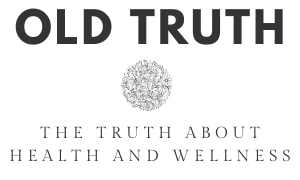The tech boom has seeped into every facet of our daily lives, from changing how we connect socially to modernizing our homes. Technological advancements have certainly made our lives more efficient and convenient. Can you remember the last time you had to search for a payphone to make a call or look at a physical map for directions? Beyond the convenience factor, improvements in technology aren’t just making us more productive, but significantly healthier. With these innovations in medicine, we are now living longer and healthier than previous generations.
We now have mobile apps and wearable technology to help track our exercise and heart rate… Robots are now performing surgery, and seeing a doctor can be as simple as getting a virtual check-up online.
Medical achievements have already come so far, but what can we expect the future of medicine to look like? Will robots replace doctors? Will cancer be cured? Will our drugs be manufactured from a 3D printer? Here, we take a look at what the medical industry has in store for the next decade.
Artificial Intelligence Taking Over
With artificial intelligence and machine learning, doctors will become better at correctly diagnosing patients. For instance, diagnostic tools can soon have the capability to read tissue samples and radiological scans to determine a patient’s health. Google researchers put more than a quarter-million retinal scans into algorithms and the technology identified patterns in the data to determine which patients could be at an increased risk for a stroke or heart attack. Gone are the days where clinicians are merely guessing a patient’s ailment based on medical knowledge and the use of software and firmware. With these advanced tools, an accurate diagnosis is almost certain.
In the doctor’s office, artificial-intelligence-driven voice to text technologies might soon replace the need for a notepad or human assistant. Instead, while a physician and patient are speaking, a voice assistant can record and input the information into the relevant columns of medical records.
Wearable Technology Becoming the Norm
The rise of the Fitbit launched a so-called wearable revolution, where people could monitor their fitness via an electronic device. Powered with artificial intelligence, this wearable tech is now part of the medicine field.
Flexible, digital tattoos will help to track blood sugar levels, measure respiratory rate, and monitor brain activity and then transmit that information to smartphones or other devices. With the help of these electronic tattoos, doctors can better diagnose illnesses, disorders, and critical health conditions.
Implantation of devices and medical aesthetics are already commonplace like birth control chips and veneers to improve your smile. We could see ways to improve impairments go even further in the future. Audiological evaluations could lead to getting a hearing aid powered by artificial intelligence. Smart contact lenses could be manufactured with biosensors to detect diseases. And chips implanted into your skin could soon hold your medical records.
A New “Reality” in Medicine
Virtual, augmented, and mixed reality have taken off in recent years in the gaming and news media industries. But medicine could soon incorporate these technologies. Augmented reality allows users to project digital information into their environment. Virtual reality gives the user a simulated environment. And mixed reality combines a bit of both. Surgeons could use AR to help them in their operations. VR could radically improve psychiatric care by helping to treat phobias. And mixed reality could bring bigger advancements to the field of medical education. Medical students might start studying anatomy via a holographic human body that gives them a 3D view a textbook just can’t provide.
Medicine is making great strides thanks to technology. And with these improvements, a healthier and happier generation of patients and physicians is sure to come.

